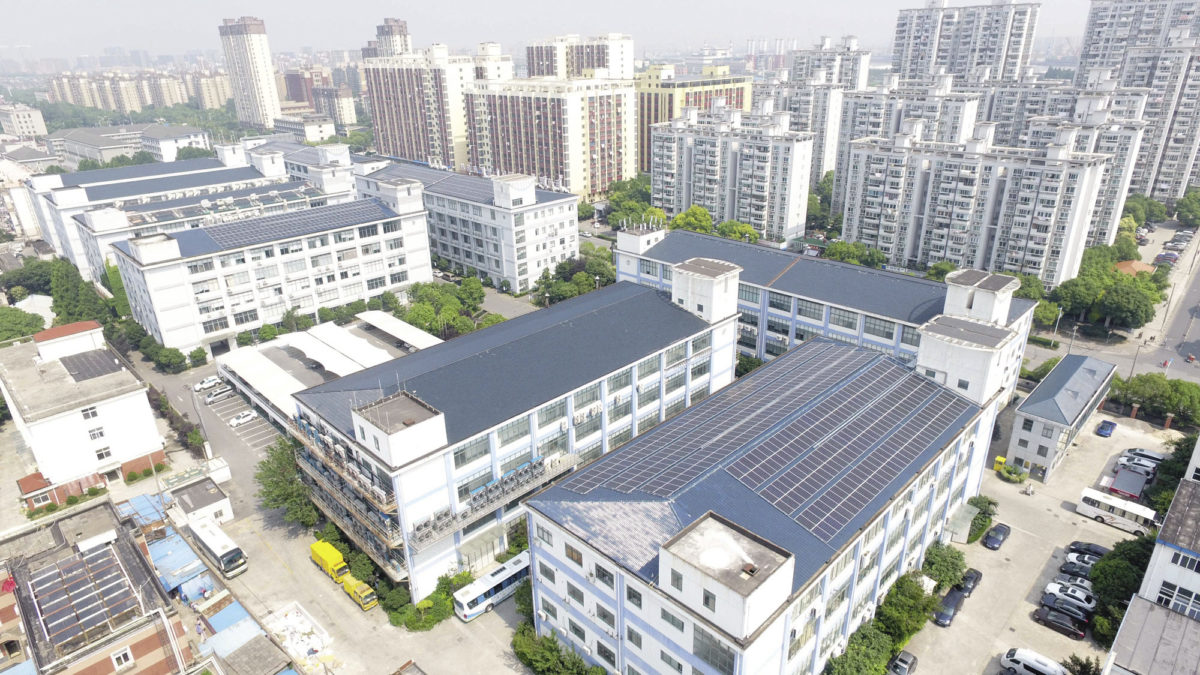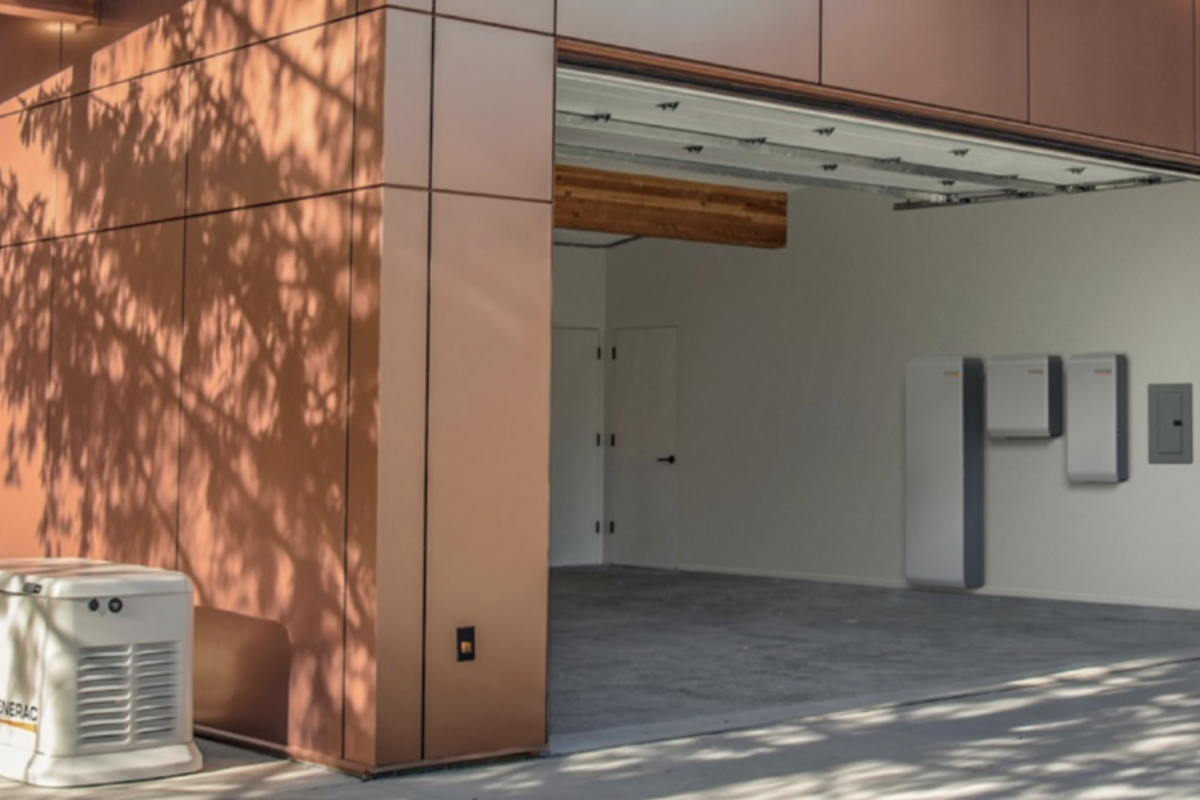From pv magazine 12/2019
Evidence of China’s declining PV market has been mounting in 2019. The first shock was delivered at a conference on Oct. 24 in Beijing, when CPIA revealed a PV installation figure of only 15.99 GW for the first nine months of the year. The installation rate represented a decline of almost 54%, compared to 34.54 GW in the same period last year.
Then on Nov. 15 at another conference, CPIA released installation figures for October, showing that just 1.5 GW had been installed for the month – 1 GW of which was in the residential rooftop market segment. This meant that for the entire month of October, only 500 MW of utility-scale or C&I projects were realized, and the anticipated second-half installation rush had not materialized.
A similar trend has played out at the provincial level. Jiangsu province – a hub for bold solar development ambitions and the home of many of China’s leading PV enterprises – has experienced a sharp decline in total installation figures this year. Just 237 MW were installed from January to October of 2019, compared with 4.25 GW for all of 2018.
These figures are so dramatically lower than initial expectations as to warrant a double take. At the beginning of the year, many industry observers gave cautiously optimistic estimates for 2019 PV installations in China, ranging between 40 and 50 GW. CPIA seemed the most pessimistic, providing a forecast of 35 to 40 GW. But now it seems that the final number may be lower than even the most pessimistic forecasts, and could represent the biggest decline in China’s PV history.
Multiple factors
There is no single factor that can be attributed as the cause of such a pronounced downturn. Rather, a combination of multiple factors conspired to push down China’s 2019 PV installations.
Perhaps the biggest single factor is that the new PV industry policy implementation rules for 2019 came in too late. Those rules were supposed to be published right after China’s spring festival, but they were delayed several times and eventually published in June. That pushed back completion dates for a lot of projects into the first quarter of 2020 and beyond. Leading module suppliers, as well as engineering, procurement, and construction (EPC) providers, have disclosed that there will be some PV projects finished around the end of the year, either several days ahead of Dec. 31 or at the start of 2020.
The second-biggest factor may also be the most complicated. The policy change from the previous feed-in tariff (FIT) regime to an auction-based system – plus unlimited grid-parity projects – had far-reaching consequences that were far beyond expectations. Chinese officials had intended to replace the former FIT system with auctions to reduce costs, and with good reason. However, the unintended consequences of the move present lessons for policymakers.
To date, there hasn’t been an actual, successful grid-parity project completed, except for a few showcase projects with special arrangements, including low land costs, tax concessions, and very low financing arrangements. At present, market participants appear to be waiting for costs to fall further.
In terms of auctioned projects, most of the 23 GW reported to the National Energy Administration were in the name of state-owned enterprises (SOEs), with very few private companies in the mix. Private companies are usually more flexible and efficient than SOEs. They are also highly motivated to proceed with solar projects to meet their own, often very high, energy demand. GCL, Chint, Sungrow, and JA Solar have been the predominant private-sector PV project developers to date. However, these major players were not successful under the 2019 auctions, and may very well miss out again in 2020.
Subsidy arrears
China’s long-term subsidy arrears have exhausted all the patience and financing ability of solar plant owners, whether state-owned or private. Companies impacted by late payments tend to have made the decision to cease further investment, and indeed to even exit from arrangements underpinning current projects. In recent months, and even as early as the second half of 2018, a lot of solar PV plants have changed hands on the secondary market, most often moving from private ownership into the hands of SOEs.
Furthermore, two official rejections from the China National Development and Reform Commission (NDRC) and Ministry of Finance (MOF) to applications for an increase to the renewable energy tariff surcharge – which is now the only source of subsidies for both wind and solar energy – have killed off hopes that the subsidy arrears issue will be resolved. China’s government would apparently rather leave the solar industry to continue suffering over the subsidy issue than risk driving up energy costs for China’s broader economy.
It also appears that there was little incentive for the SOEs that had been awarded projects in the solar auctions to push installation schedules forward. As a result of the ongoing policy uncertainty, there was no hard deadline for project completion under the auction mechanism. Rather, investors and EPC suppliers could choose to finish a project by the end of 2019 and receive the awarded price, or at a later date, with a deduction of CNY 0.01/kWh for each quarter – a negligible penalty that could easily be absorbed by continuing PV module price reductions. As a result, many project developers have chosen to wait, with few arrays scheduled for completion in 2019.
Wind commitment
On top of this, China has enacted relatively positive guiding policy settings, along with hard timelines, for the wind power sector this year. Most of the major state-owned renewable energy investors are involved in both wind and solar power development and effectively treat them as equals. Given the policy situation, many renewables developers have prioritized wind over solar.
For example, China Huaneng Group (CHNG), one of China’s “big five” energy companies, has invested the equivalent of $3.42 billion in wind projects thus far in 2019, but only $10.6 million in solar projects. And the largest energy investor, State Power Investment Corp. (SPIC), has spent more than $7 billion on wind power plants, with little investment in solar projects – including bids submitted under auctions. One Chinese government official, speaking on condition of anonymity, told pv magazine that “major SOE investors rushed for wind this year, and nobody cares about solar for now.”
Price declines
The final major factor that has pushed China’s solar sector toward the “cliff edge” in 2019 is that expected module price reductions have not materialized. Under the auction program, many bids factored significant price reductions into their plans. However, due to booming overseas markets and the termination of trade sanctions on PV module exports from China to the European Union, China’s module exports have grown to historic highs – buffering module price declines.
This has left many bidders with little choice other than to continue waiting for module prices to drop to a level more in line with their bids.
There are also signs coming from some major module makers that they are less willing to sell products to domestic SOE projects under the current circumstances, primarily because of serious payment delays. And in any case, they would rather export their products to overseas markets where they can command higher prices.
Not all doom and gloom
Multiple factors contributed to this strange and unexpected market decline. However, there are still 6-8 GW of ground-mounted PV and commercial-industrial projects currently under construction. It is very likely that they will be completed on time and added to 2019’s installation total, helping it to reach 23-25 GW.
There are other types of projects underway that may also contribute toward the final total, including those developed under the Top Runner program, remaining poverty alleviation projects, and ones that are classified as being necessary to support the grid. Once these are included, the total solar installation figure may yet push close to the 30 GW level.
Despite the domestic installation drop, there is an upside. Due to the sharp decline in ground-mount and commercial installations, for the first time, residential PV has become a mainstream and important part of the puzzle. Total residential PV installations stood at more than 5.3 GW at the end of October, making up more than 30% of the overall total. Shandong province on the east coast was a particularly strong performer, with around 1.9 GW of residential PV projects installed since January.
Solar component manufacturing is also continuing to achieve rapid growth. Statistics from CPIA show that each key step in the value chain, from polysilicon to module manufacturing, recorded a year-on-year output increase of more than 30%.
And exports continue to boom, picking up much of the slack left by the domestic downstream industry. China customs data show that by the end of October, more than 57 GW of PV modules were exported, which took a proportion of about 70% of the total produced. Benefiting from strong overseas market demand from Europe, the Middle East, India, Latin America and Australia, major China PV manufacturers are continuing to do very good business.
This content is protected by copyright and may not be reused. If you want to cooperate with us and would like to reuse some of our content, please contact: editors@pv-magazine.com.



The success of Chinese PV makers in expanding exports to make up for the disastrous mismanagement of the domestic market by Beijing technocrats is both welcome and surprising.
A possible explanation. I suggest that big solar developers outside China often price their bids for marquee projects assuming future falls in prices, as long as the completion date is not tight. If prices fall faster than expected, they have the option of bringing forward the timetable and buying the panels early. In this way a flexible pipeline of projects could act as a stabiliser for swings elsewhere, as in China. The hypothesis could be tested by seeing if schedules are in fact being accelerated..